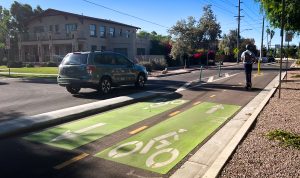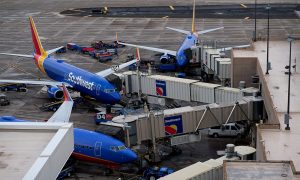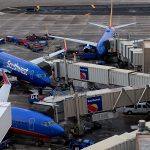This year, Congress is considering the Federal Aviation Administration’s (FAA) reauthorization bill. The bill is important because it funds the agency charged with overseeing the nation’s aerospace system.
The last time the FAA reauthorization was under consideration, in 2007, Congress allowed the agency to operate under 23 short-term extensions. It took until February, 2012 before it was able to pass a bill and send it to President Obama. The current authorization expires in September.
With billions of dollars at stake, the trade organizations representing airlines and airports are in full battle mode to ensure that their constituencies get their share of the FAA reauthorization pie.
One of the biggest points of contention is the Passenger Facility Charge (PFC).
Every airline passenger is charged a PFC of up to $4.50, a rate first set in 2000, to help airports pay for a variety of FAA-approved projects. These address safety, security, or the number of flights an airline is allowed to handle, reduce noise or increase air carrier competition.
During the last reauthorization battle, two trade groups, the Airports Council International-North America (ACI-NA) and the American Association of Airport Executives (AAAE), tried but failed to get Congress to approve raising the cap of the PFC to $7.00.
ACI-NA and AAAE, working together under the Airports United banner, argue that rising construction costs have eroded the purchasing power of the PFCs by about 50 percent. Now, they want to see the cap raised to $8.50, and indexed to account for inflation.
The organizations contend that in the next five years, airports will require more than $71 billion to improve infrastructure to prevent passenger delays and congestion.
But another trade group, Airlines for America (A4) is firmly against what it calls “a historic tax hike” on the traveling public. In a letter to House and Senate leaders, the A4A board, made of of airline CEOs, said the PFC hike was not necessary.
“This is simply not necessary as significant airline investments combined with airports’ resources and funding streams provide airports with the funds for improvement projects needed today and in the future. Airlines and airports have a history of partnering on significant improvements,” said the letter.
“Since 2008, over $70 billion of capital projects have been completed, are underway or approved at the nation’s 30 largest airports alone, and development is robust at smaller airports across the country as well.”
Their letter noted that federal taxes constitute 21 percent, or $63, of a typical domestic one-stop, round-trip ticket. “If the airports get their tax increase, a family of four taking one round trip could pay up to $136 just in airport taxes. That’s $64 more taken directly out of the pockets of American families,” it said.
In 2013, U.S. airports collected $24.5 billion in revenue and have more than $11.4 billion of unrestricted cash and investments on hand, said A4A “They also have access to the Airport and Airway Trust Fund, which is at its highest level since 2001 ($6 billion). The CEOs pointed out that airport funding is secure and that it is not necessary to increase yet another tax on passengers,” it added.
For story ideas, look at projects either in the planning stages under way at airports in your local community, and see if they are being funded with PFCs.
STORY IDEAS
Airports Council International-North America










